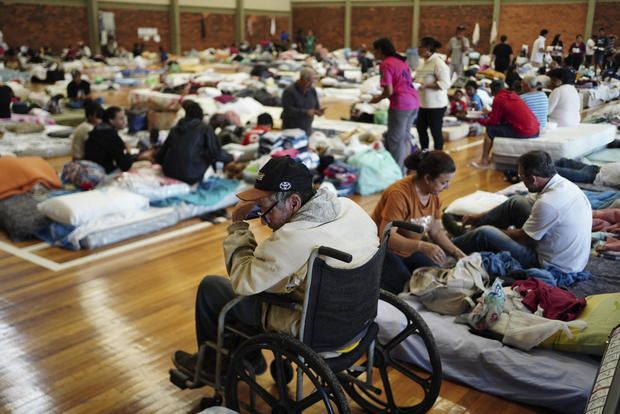The death toll from devastating floods that have ravaged southern Brazil for days reached 100 on Wednesday, authorities said, as the search continued for dozens of people still missing.
Nearly 400 municipalities have been affected by the worst natural calamity ever to hit the state of Rio Grande do Sul, with hundreds of people injured and 160,000 forced from their homes.
On Tuesday, state governor Eduardo Leite had warned the human toll was likely to rise as “the emergency is continuing to develop” in the state capital of Porto Alegre and other cities and towns. Authorities urged people not to return to affected areas due to possible landslides and health hazards.
The National Confederation of Municipalities said nearly 100,000 homes had been damaged or destroyed by unprecedented rains and floods in the state, with losses estimated at more than $900 million.
The state’s Guaiba River, which runs through Porto Alegre, reached historic levels and five dams are at risk of rupturing.
Only two of Porto Alegre’s six water treatment plants were functioning, the mayor’s office said Tuesday, and hospitals and shelters were being supplied by tankers.
Helicopters were delivering water and food to communities most in need, while work continued on restoring road access.
In Gasometro, a part of Porto Alegre popular with tourists, the water continued to rise Wednesday, complicating rescue efforts.
“You can only cross on foot or by boat. There is no other way,” 30-year-old resident Luan Pas told AFP next to a street turned into a stagnant, smelly river.
The Air Force said the military base outside town will receive commercial flights transporting aid and passengers.
“This is a parallel universe,” said one of them, university professor Daniela da Silva, 30.
The Inmet meteorological institute has warned of more storms with heavy rains and winds in the south of the state and downpours over the weekend in the Porto Alegre region.
The World Meteorological Organization in a report Wednesday, said Latin America and the Caribbean had recorded its warmest year on record in 2023 — “a year of record climatic hazards” for the region due to climate change and the El Nino weather phenomenon.
Due to climate change, extreme or rare events “are becoming more frequent and more extreme,” Jose Marengo, research coordinator at Brazil’s National Center for Natural Disaster Monitoring (Cemaden) told AFP.

